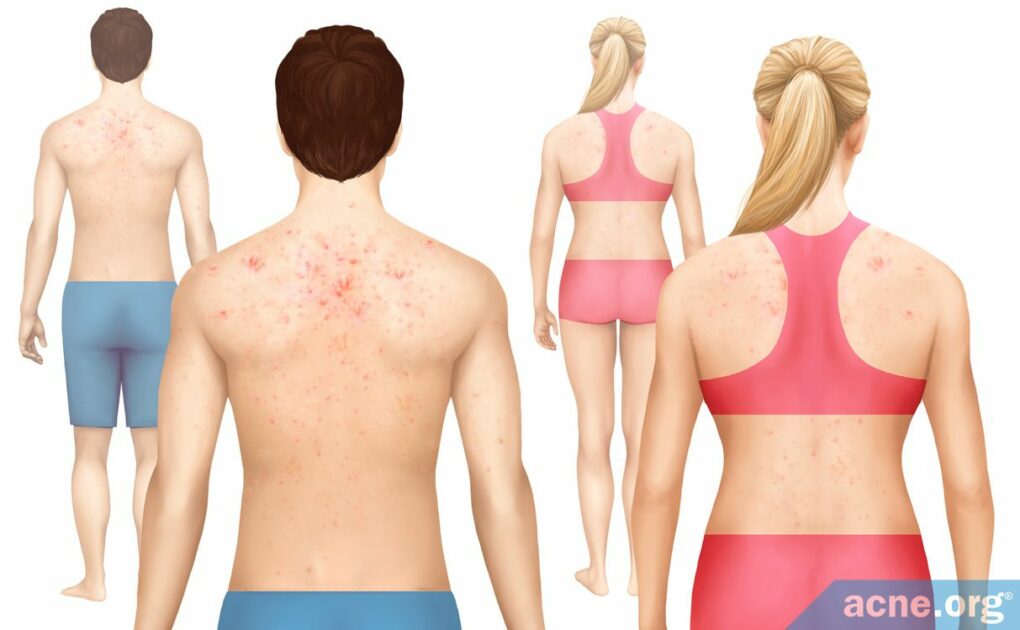Males Might Experience Body Acne Slightly More than Females

The Essential Info
Males might experience body acne a bit more than females.
However, the only data we have comes from two weak studies that are not very reliable.
The first study showed that males had more body acne. The study was done by a doctor in private practice and included 300 subjects between the ages of 14-30. It found that of the people who came to the doctor complaining of facial acne, 53% of males also had body acne, and 43% of females also had body acne.
The second study showed that males and females had the same amount of body acne. This study was an online survey with 2000 participants, and it found that 52% of males and 52% of females who had facial acne also reported body acne.
In the real world, however, most dermatologists will tell you that they see more male patients with body acne, and male patients as a whole have more severe cases of body acne when compared with female patients.
What we know for sure is that both males and females do in fact suffer from body acne. When we look at the population as a whole, about half of all people who have facial acne also battle with some body acne.
Treating Body Acne: Since body acne develops similarly to facial acne, treatments are also similar, with one exception: the skin on the body is tougher than the skin on the face and can withstand more aggressive treatment.

The Science
- How Common Is Body Acne?
- One Study Shows that Body Acne Affects Males Slightly More Often
- Pregnancy – A Special Case of Acne in Females
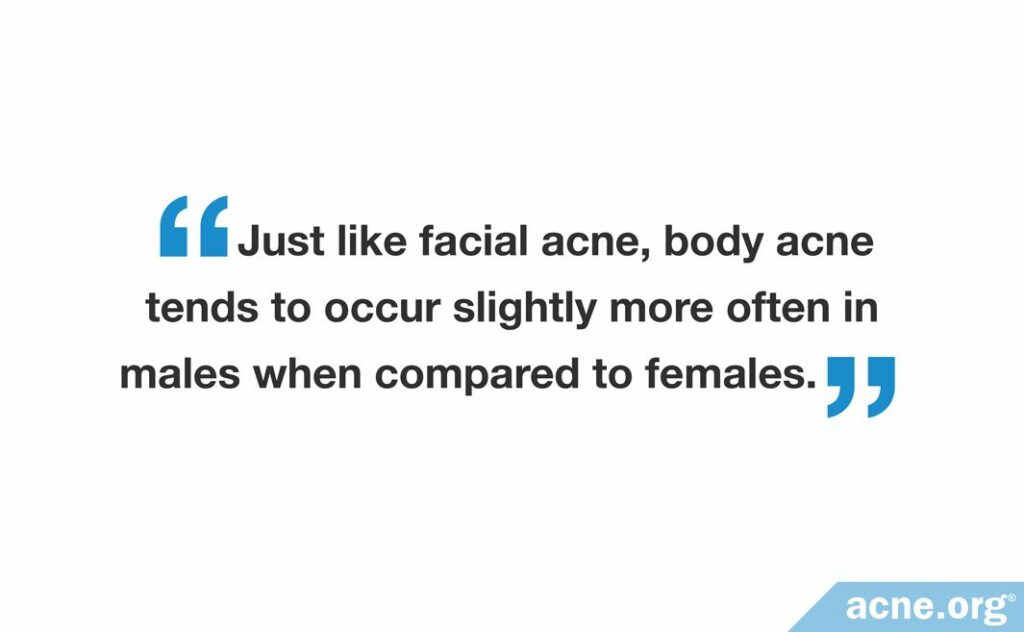
Body acne is acne that appears on parts of the body other than the face and is often referred to as “truncal acne” since it mainly affects the trunk (i.e. the back and chest).1
How Common Is Body Acne?
Body acne is common. About half of people who have facial acne also suffer with body acne.
However, almost all of the research that has been completed so far does not present data for males and females separately, like these two studies:

A 2008 study mentioned in the Journal of Clinical and Aesthetic Dermatology found that, of 965 male and female patients with acne:
- 92% had acne on the face
- 45% had acne on the chest
- 61% had acne on the back2
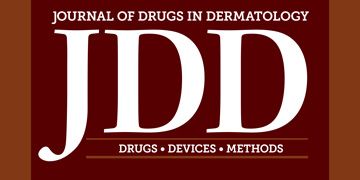
Another study, published in 2006 in the Journal of Drugs in Dermatology reported that, of 696 males and females studied:
- 47.6% had only facial acne
- 2.3% had only body acne
- 52.3% had both facial and body acne3
If we want to look at males vs. females, we only have two studies to look at, and both are limited. Each of these studies is outlined below.
The First Study Shows that Body Acne Affects Males Slightly More Often
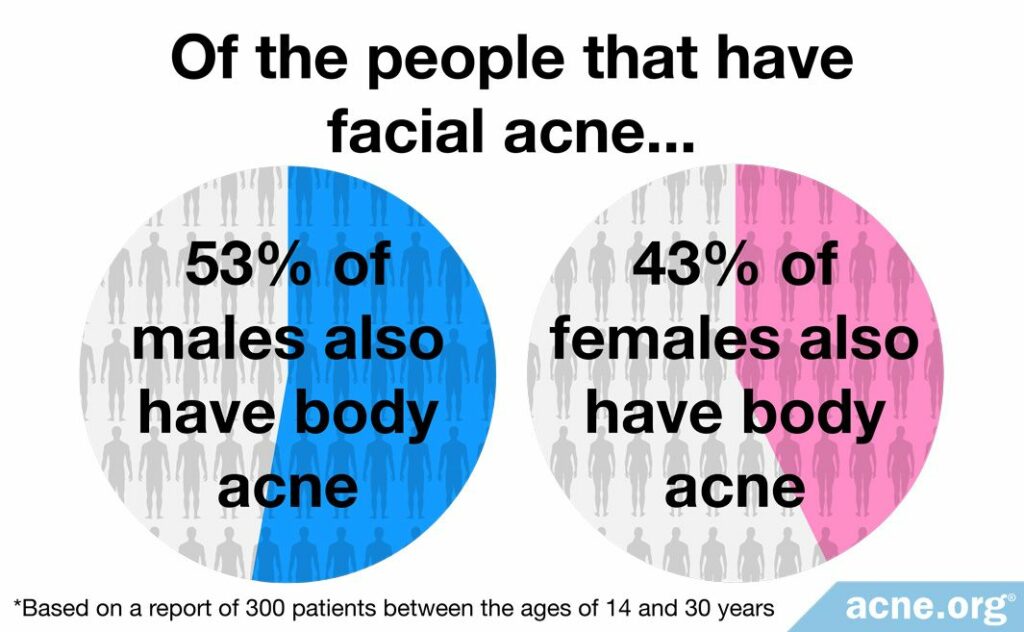
The first study is really only a preliminary report that was performed by a doctor in private practice. It showed that among 300 patients with facial acne between the ages of 14 and 30 years, 47% of the patients also suffered from body acne.
The doctor further found that body acne was slightly more common in his male patients (53%) vs. his female patients (43%).4
A Second Study Shows that Body Acne Affects Males and Females Equally
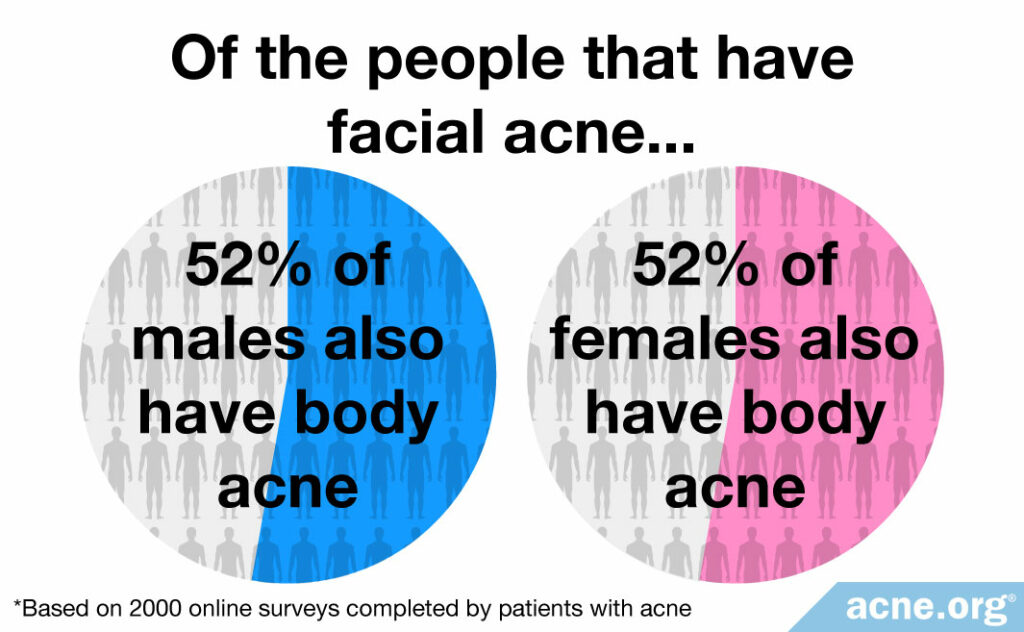
A more recent study, conducted in 2022, shows something different—that males and females experience body acne equally.5
In this study, 2000 subjects with acne aged between 13 and 40 filled out an online survey. Exactly 52% of both males and females reported that they also suffered from body acne.
Interestingly, the results of this study also suggested that body acne often appears later than facial acne.
However, these findings were only based on online questionnaires completed by patients themselves, so more rigorous studies are needed to confirm these results.
Unfortunately, that’s all the data we have on who experiences body acne more often, males or females. But in the real world, most dermatologists will tell you that they see body acne a bit more often in male patients.
Pregnancy – A Special Case of Acne in Females
While pregnancy normally helps clear up acne–including body acne–a flare of acne can arise while a woman is pregnant, especially during the third trimester. The occurrence of acne during pregnancy is due to hormonal changes that take place in a woman’s body. During the third trimester, an increase in androgens (male hormones that are present in both males and females) can occur, which can lead to acne on the face and body.6,7
A French survey taken in 2014 and published in Acta Dermato-Venereologica found that acne occurs in non-pregnant women with regular adult acne around 41% of the time. However, in cases of acne during pregnancy, it is much more common for it to spread to the body–around 87% of the time.8

In the survey, 378 acne-affected pregnant women were questioned as to their history of facial and body acne. The average age of the women was 29.8 years at the time of consultation, with 10.9% of them aged 18 to 25, and 89.1% over age 25. The researchers found that 86.6% of the women had a history of acne. Of those, 35.1% experienced a relapse in previously cured acne, while 51.5% experienced continuous acne from adolescence through pregnancy. Of that 51.5%:
- 59.7% reported that their acne worsened during pregnancy
- 9.1% reported that their acne improved during pregnancy
- 31% experienced no change
Of the women studied:
- 35.2% had only acne on the face
- 87.2% had acne on both the face and body
The researchers concluded that:
- Body acne during pregnancy occurs mostly in women who had acne before.
- Acne worsens on the face during pregnancy, and often spreads from the face to other areas of the body.
While rigorous research on body acne in males versus females is lacking, researchers agree that body acne is common in both sexes and can decrease a person’s quality of life. Treatments that are effective for facial acne can also work on body acne.9-11
References
- Kim, B. R., Chun, M. Y., Kim, S. A. & Youn, S. W. Sebum secretion of the trunk and the development of truncal acne in women: do truncal acne and sebum affect each other? Dermatology 231, 87 – 93 (2015). https://www.ncbi.nlm.nih.gov/pubmed/26022281
- Bikowski, J. A review of the safety and efficacy of benzoyl peroxide (5.3%) emollient foam in the management of truncal acne vulgaris. J Clin Aesthet Dermatol 3, 26 (2010). https://www.ncbi.nlm.nih.gov/pubmed/21103313
- Del Rosso, J. Q. et al. A closer look at truncal acne vulgaris: prevalence, severity, and clinical significance. J Drugs Dermatol 6, 597 – 600. https://www.ncbi.nlm.nih.gov/pubmed/17668525
- Del Rosso, J., Bikowski, J. & Baum, E. Prevalence of truncal acne vulgaris: A population study based on private practice experience. J Am Acad Dermatol 56, AB3 (2007) https://www.em-consulte.com/en/article/380473
- Tan, Jerry et al. Prevalence and demographics of truncal involvement among acne patients: Survey data and a review of the literature. The Journal of Clinical and Aesthetic Dermatology 15,62-67 (2022). https://pubmed.ncbi.nlm.nih.gov/36312821/
- Zaba, R., Schwartz, R., Jarmuda, S., Czarnecka-Operacz, M. & Silny, W. Acne fulminans: explosive systemic form of acne. J Eur Acad Dermatol Venereol 25, 501 – 507 (2010). https://www.ncbi.nlm.nih.gov/pubmed/21029206
- Chien, A. L., Qi, J., Rainer, B., Sachs, D. L. & Helfrich, Y. R. Treatment of Acne in Pregnancy. J Am Board Fam Med 29, 254 – 62 (2016). https://www.ncbi.nlm.nih.gov/pubmed/26957383
- Dréno, B. et al. Acne in pregnant women: a French survey. Acta Derm Venereol 94, 82 – 3 (2014). https://pdfs.semanticscholar.org/171b/e673a5d1bd1b0325dd4ee3ba61dc0da11729.pdf
- Poli, F., Auffret, N., Leccia, M. T., Claudel, J. P. & Dréno, B. Truncal acne, what do we know? Journal of the European Academy of Dermatology and Venereology 34, 2241–2246 (2020). https://pubmed.ncbi.nlm.nih.gov/32421879/
- Woo, Y. R. & Kim, H. S. Truncal acne: An overview. Journal of Clinical Medicine 11, 3660 (2022). https://pubmed.ncbi.nlm.nih.gov/35806952/
- Tan, J. et al. Impact of facial and truncal acne on quality of life: A multi-country population-based survey. JAAD International 3, 102–110 (2021). https://pubmed.ncbi.nlm.nih.gov/34409378/
 Acne.org Products
Acne.org Products